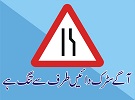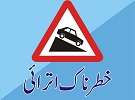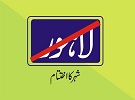CONTACT US
- CTO Office, Near Civil Lines Police Station, Opposite Kachehrian.
- Tel. +92-41-9200514, 9200714
- Help Line. 1915
- Fax: +92-419200515
- Email:fsd.ctp@gmail.com

































Faisalabad, a textile industrial center and the third largest city of Pakistan, is located some 100 km west of Lahore, capital of the Punjab province. Population residing within the municipal limits is estimated to be 2.6 million while the population of the entire district was 5.4 million in 1998. The district of Faisalabad is bounded on the north by the districts of Gujranwala and Sheikhupura, on the east by Sahiwal district, on the south by Toba Tek Singh district and on the west by Jhang district.
During the later half of the nineteenth century, British colonial government launched a major effort in the Punjab to increase agricultural production by laying down one of the most elaborate canal systems in the world. This scheme also extended to the areas comprising today’s Faisalabad district. The city was founded by the British Lieutenant Governor, Sir Charles James Lyall in 1880, for whom it was originally named Lyallpur, to attract population to colonize irrigated lands as a part of this scheme.
The city centre of Lyallpur was designed by Captain Poham Young, the then Deputy Commissioner of Jhang district, to imitate the Union Jack with eight roads radiating from a large clock tower in the centre to eight separate bazaars. Three icons of the city, the Clock Tower, Kaiseri Bagh and the Kaiser Gate were constructed respectively in 1905 and 1897 to commemorate the acceptance of the title of Kaisera-e-Hind by Queen Victoria in 1877. Sikh Zamindars contributed towards the construction of the Tower at a rate of Rs.18 per square of land while Kaiseri Gate was funded by Mr. Lal Mohin Lal.
The new district of Lyallpur was carved from Jhang district in 1904 and then comprised Tehsils of Lyallpur, Samundri and Toba Tek Singh with a sub Tehsil at Jaranwala. In 1906, the District Headquarters began to function at Lyallpur. The Town Committee was established in 1904 which was soon upgraded as Municipal Committee in 1909.
Political awakening in the sub-continent during World War II left a strong impression over the city. Freedom struggle in the district heightened when Quaid-e-Azam Muhammad Ali Jinnah visited the city in 1943 and addressed a large gathering in Dhobi Ghat Grounds. After independence, the city which had so far been known for its grain markets, grew rapidly into an important commercial and industrial centre. In 1977, the name of the city was changed to Faisalabad, after the name of the late king of Saudi Arabia, Shah Faisal-bin-Abdul Aziz. In 1985, the city was upgraded as a division with the districts of Faisalabad, Jhang, Toba Tek Singh and Chiniot. After the promulgation of the Local Government Ordinance, 2001 the divisions were abolished and Faisalabad was declared as a City District.